Every blend of coffee beans has a myriad of flavors that it can potentially unleash depending on roast level and origin. These range from grass, to berries, then roasty flavors like graham crackers, and eventually: smoke and ash. The key with roasting is finding the ideal roast level for coffee from a given country or region. Every coffee has a certain potential flavor that is more potent than any other it will produce. For example, our current Colombia Tolima has the most powerful flavor when it is roasted to have notes of red wine, apple, and honey. You could, of course, roast it lighter or darker, but the resulting flavors are less preferable for our purposes. It's very similar to making a steak: people prefer different cuts or varieties of beef (akin to different coffees), and rarity (quite similar to roast levels).
When considering what level of coffee to drink, it largely comes down to preference of taste and smell. For those who add cream and sugar, dark coffees can withstand added sweetness while maintaining a semblance of 'coffee flavor'. Very light roasts barely taste like the classic understanding of coffee to begin with, so adding cream or sugar will produce a completely different experience. You might even find that certain coffees taste quite similar to juice. There also seems to be a correlation for adding additional ingredients with people who drink darker coffee. Third wave roasters will often argue that if you need cream and sugar, you're drinking the wrong coffee -- or you just don't like coffee itself. We encourage letting people enjoy whatever they like. Preference for lighter roasts usually comes from a distaste for roasty flavors, or a favoritism of either complexity or sweet notes.
Categories:
Light roasts tend to be favored for their complex and bright notes. You'll often taste things such as lemongrass, apple, fruits, and floral flavors with these. Sometimes however, roasters can get carried away, considering lighter roasting to be infinitely better. This is often a trap that many new roasters who discover complex notes fall into, and can result in grassy, vegetable-like flavors. There's always a balance to be found. Our light roasts include Ethiopian, Costa Rica, and Rwanda.
Medium roasts cover a wide range of flavors, and, depending on the roaster, they draw the line between medium and dark at very different levels. If you were to try the same coffees roasted to different degrees, you'd notice a continuum of flavors, gradually changing. For example: apple notes turn to cider, fruity becomes wine-like, and honey becomes more like maple syrup or molasses. Medium roasts are ideal for those who neither enjoy citric, nor smoky flavors. Some examples from our store include Colombia Tolima, Mexico, and House.
Our medium roasts also have a couple lighter variants, such as Breakfast Blend, Colombia Sierra Nevada, and River/Kaldi's Blend. As for darker types, our medium roasts also feature Creekside/Kartika Blend and Peru.
Dark Roasts are often chosen by those who have a distaste for fruity flavors in their coffee. They're also a favorite among those who add cream and/or sugar, as dark roasts have very bold flavors that will take such additives without becoming too weak. Our General's, Sumatra, and Espresso are great options for this purpose.
There's no right answer when it comes to what type of coffee to drink. Some like darker roasts because it's a full, warming flavor, and some like light coffee because it's often gentler or more flavorful. Whatever one's preference, all that matters is that they enjoy what they're drinking.




